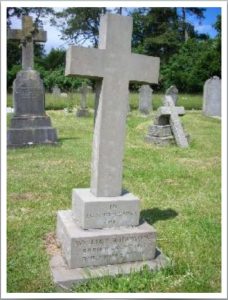2nd Battalion, Gloucestershire Regiment

William Henry Hawkins was born in Sheepscombe, Gloucestershire in early 1887. His parents were Joseph Henry (a gardener) and his wife Charlotte Martha. The couple had three children, a daughter Florence (born 1886), William (born 1887) plus another who probably died in infancy.
At the time of the 1901 Census the family was living in Painswick at the Coffee Tavern, Victoria Square where Charlotte was the Manageress.
By the time of the 1911 Census Henry and Charlotte had moved to Tibbewell Street in Painswick and neither children lived at home. Prior to enlistment in the Army William was a mill hand, who had also served time in the 3rd Battalion of the Gloucestershire Regiment Militia. On 19 January 1905 he signed on for eight years, with a further nine in the Reserve, when aged 18.
Following initial training he joined the 2nd Battalion of the Glosters on 22 May 1905. He spent almost two years in the UK before arriving in India in February 1907, with the 1st Glosters and he stayed there until October 1910. A posting to Malta, with the 2nd Battalion of the Glosters, followed and this was completed in December 1913, following which he returned to the UK.
He had now completed his initial eight years’ service and he then transferred to the Army Reserve on 18 January 1914. As a Reservist he was mobilised on 5 August 1914, following the declaration of war and he was posted to the 1st Glosters (retaining his number 7886).
On 13 August he was in France with the British Expeditionary Force, where the 1st Glosters (part of 3 Brigade, 1 Division) was deployed in resisting the German advance during what became known as ‘the Retreat from Mons’. His first encounter with the enemy took place on 24 August at Haulchin and two days later, on the 26th, he received a gun shot wound in his calf at Le Favril, near Landrecies. After initial treatment at a field ambulance, he was sent to No 2 General Hospital at Le Havre before being re-patriated and admitted to Cambridge Hospital, Aldershot on 30 August. He remained in hospital until 11 September and upon discharge remained in the UK until 22 November 1914, on the ration strength of the Regimental Depot.
On 23 November 1914 he returned to France and rejoined the 1st Glosters near Langemark in the Ypres Salient. It proved to be a short stay back on the Western Front, as on 30 December he was once more treated in a field ambulance for an abscess on his foot. His condition was sufficiently serious for his repatriation to the UK on 3 January 1915.
He remained in the UK, with the Regimental Depot and the 3rd Battalion, until 18 May 1915. When he once again returned to France, this time to join the 2nd Glosters (81 Brigade, 27 Division). The Battalion was still located in the Ypres Salient but by the end of the month had been withdrawn to the quieter Armentieres sector.
On 25 November 1915 the battalion sailed from Marseilles for Salonika, arriving on 12 December and during the voyage he was promoted to Corporal. Whilst in Salonika he was diagnosed with pulmonary tuberculosis and was sent to Cairo and thence to England on 17 January 1916. Whilst on ‘sick leave’, from 29 January, he was assigned to the Regimental Depot until his discharge, ‘having been found no longer fit for military service’ on 27 February 1916.
He was awarded a Silver War Badge and a pension. Nothing is known about him following his discharge from the Army.
In the early 20th Century treatment for pulmonary tuberculosis was very limited and presumably his condition gradually worsened and it eventually took his life on 1 November 1918, aged 31.
He was buried in Painswick Cemetery, where a privately erected stone cross marks his grave. He is commemorated on the Painswick War Memorial.
Researched by Graham Adams 19 March 2018
